Painter/sculptor Michael Pacher took almost 10 years to create his three-paneled winged altar before it was transported to the parish church in Sankt Wolfgang in Upper Austria’s Salzkammergut lake district in 1479. Today, it is the only completely intact altar by Michael Pacher, one of the most important Austrian Late Gothic masters. The winged altar is a folding altarpiece (reredos) with a main shrine, two movable outer wings and two movable inner wings.
Linz-based photographer Florian Voggeneder employed leading-edge automated camera tracking technology to produce high-definition gigapixel images of the Pacher Altar. And there’s no better place to present his amazing high-resolution shots than Deep Space 8K. At the Deep Space LIVE event on December 3, 2015, Michael Zugmann, a theologian at the Katholisch-Theologische Privatuniversität Linz, and art historian Lothar Schultes of the Museum of the Province of Upper Austria elaborated on this extraordinary masterpiece. Due to the tremendous popular demand, the presentation will be reprised on Sunday, December 6th and 13th from 11 AM to 12 Noon each day. We asked Lothar Schultes and Michael Zugmann what makes this altar so special.
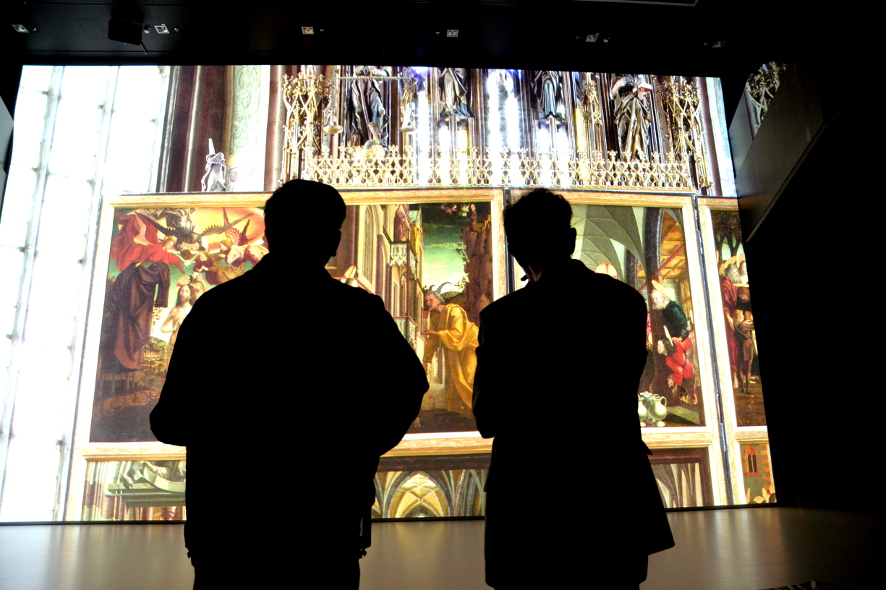
Lothar Schultes and Michael Zugmann at Deep Space 8K (Credit: Magdalena Leitner)
What makes the Pacher Altar unique, and why was the decision made to produce gigapixel images of it?
Lothar Schultes: The Pacher Altar in St. Wolfgang is one of our most important works of art, and it’s the best-preserved winged altar anywhere in the world! One of the main reasons for this is that, in 1787, the parish priest refused to permit a tabernacle to be built into it. Furthermore, the artist, Michael Pacher, was bound by contract to execute the shrine group “as exquisitely and as excellently as he is capable of doing.” In other words, what we have here is the absolute pinnacle of Late Gothic artistry, and its price, 1,200 Hungarian guldens, made it one of the most expensive works of that day and age.
Michael Zugmann: It is justifiably a very famous work of art in Upper Austria. Besides the fact that it’s a winged altar preserved in its entirety, this altar also features a highly elaborate and instructive pictorial program.
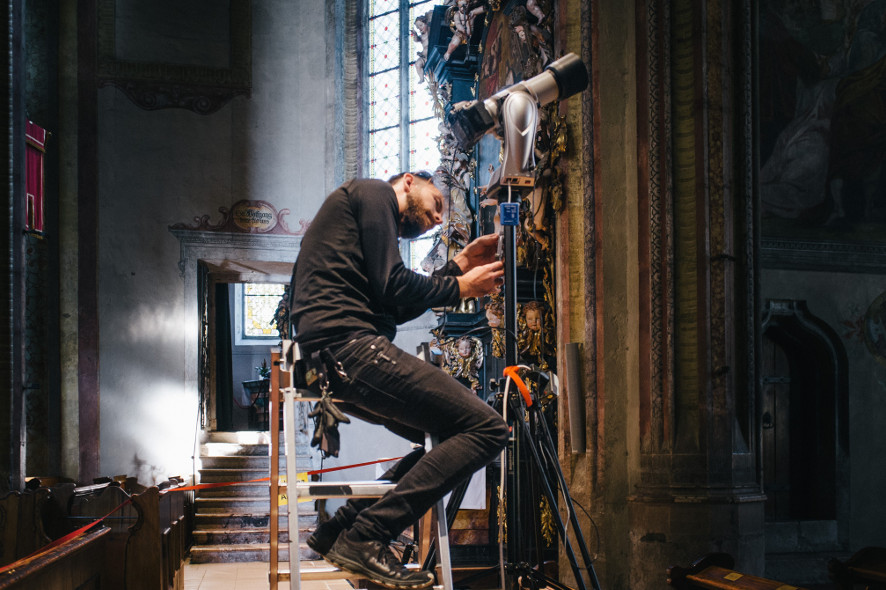
Florian Voggeneder during the recording of the gigapixel (Credit: Florian Voggeneder)
What was your reaction when you first saw the Pacher Altar at such a high level of resolution in Deep Space 8K?
Lothar Schultes: The images bring out details that are lost on those viewing the altar in the church. This attests to just how lovingly Pacher attended to every detail, since, of course, he realized that they wouldn’t be visible by churchgoers. That holds true for both the carved elements as well as the paintings. For example, in the background of the scene depicting the Nativity of Christ, the observer can see a medieval city, but it takes very powerful magnification to make out the details.
Michael Zugmann: I was especially delighted by the colorfulness, liveliness, and meticulous attention to detail, particularly in the paintings! This colorfulness and the fact that the images were painted are in sharp contrast to the Kefermarkter Altar that we gave a talk about last year.

Credit: Magdalena Leitner
What especially surprised or fascinated you as you went about your close-up examination of the Pacher Altar?
Michael Zugmann: The many details were what delighted us the most and what we scrutinized with greatest interest—for instance, that tiny figures representing Jesus’ family tree are carved into the framework of the shrine, and that the background of the tiny scene depicting the flight to Egypt includes an idol that’s been toppled from its pedestal.
Lothar Schultes: During every viewing, we came across previously overlooked details, like the minute figures climbing up the vines on the frame, and the many precious gems adorning Wolfgang’s vestments. When you zoom in on the Saint’s shoulders, you can even see tiny shells. It’s truly amazing!
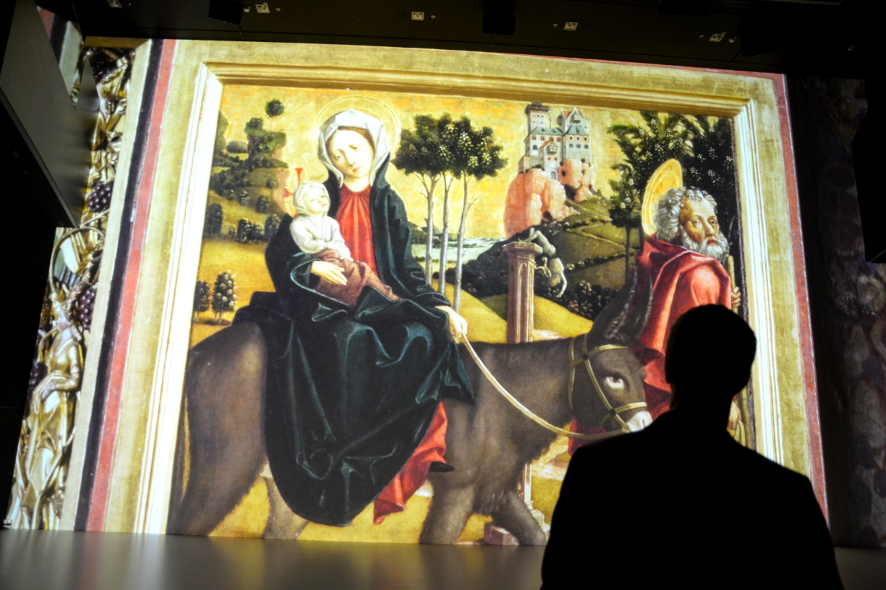
Credit: Magdalena Leitner
Which elements of the altar do you focus on during your presentation in Deep Space 8K?
Lothar Schultes: Since three presentations are currently planned and the altar can be opened doubly, we’ll be looking at one of the three possible positions each time. Only very large and elaborate winged altars permit a triple conversion of this kind. In St. Wolfgang, churchgoers on regular weekdays saw the altarpiece in its closed state illustrating the legend of St. Wolfgang; on Sundays, they beheld the picture wall containing scenes from the life of Christ; and on high holidays, the shrine was opened to reveal the Coronation of the Virgin. Plus, the predella [platform on which the altar stands] can also be opened and closed, so worshippers see a varying program of imagery.
Michael Zugmann: We’ll focus on a different topic at each presentation. On December 3rd, we’ll deal with the altar’s “holiday side” when all the wings are open. These are scenes from the life of Mary, of her coronation, of St. Wolfgang and of St. Benedict. On December 6th, we’ll look at the “weekday side” when all the wings are closed, and the altar shows scenes from the life of St. Wolfgang. And on December 13th, we’re going into the “Sunday side” depicting scenes from the life of Christ.
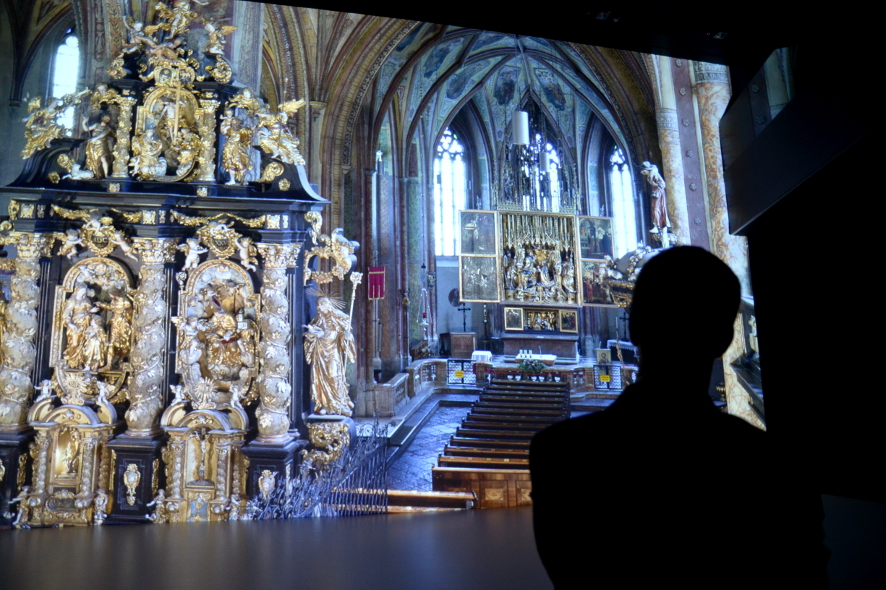
Credit: Magdalena Leitner
Are your talks recommended only for those interested in theology?
Michael Zugmann: I think they’re suitable for a variety of audiences—above all for people who want to consider these images in unhurried fashion and allow their impact to slowly unfold.
Lothar Schultes: Pacher’s aim was to depict the events described in the Bible and handed down in stories about the lives of the saints in a way that was as immediate and as vivid as possible. For instance, in the scene showing the temptation of Christ, Pacher refrained from depicting the Devil as a grotesque, imaginary creature as was common back then. The Devil is shown with horns, but looks human otherwise. Thus, Pacher sought to convey even incredible events in a credible way by transposing them into his own day and age. For example, the Temple of Jerusalem is portrayed as a Gothic church. This highly individualistic take on Christian tradition is the fascinating thing about his images. Thus, Pacher’s thinking as an artist was very modern, and not only in this respect.
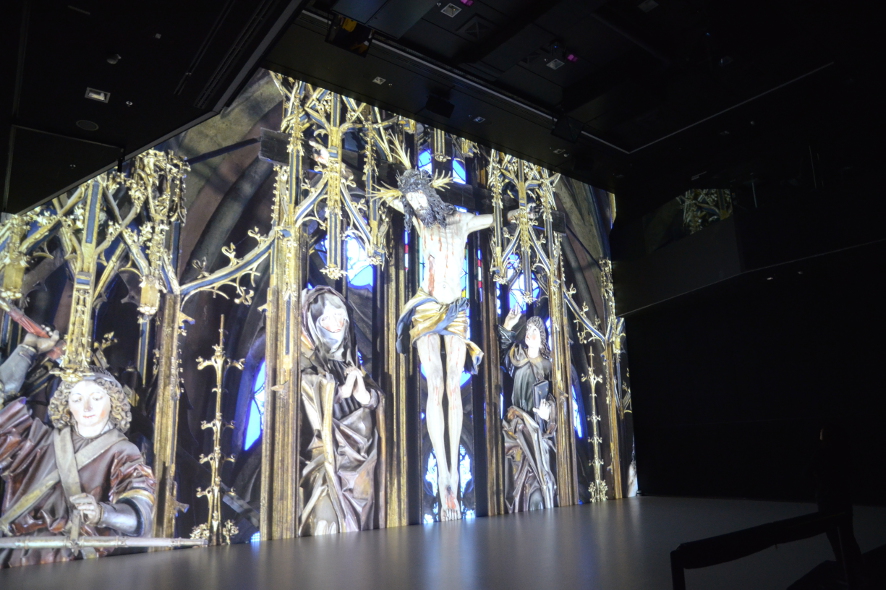
Credit: Magdalena Leitner
In times like these, when many are turning away from the Church, do you feel that a modern mode of representing ecclesiastical elements—like what Deep Space 8K is doing—can provide an occasion for people to renew their relationship with the Church?
Michael Zugmann: It’s wonderful that, in the broad spectrum of Deep Space’s lineup, a place is being made for ecclesiastical art. After all, it’s an essential part of our culture. Moreover, this gets people thinking about the deeper significance of Christian salvation depicted here. What meaning do the lives of Jesus, Mary and the Saints have for our lives? Ecclesiastical art, like many other art forms, not only aims to delight (delectare) and to teach (docere) people, but also to move (movere) them.
Lothar Schultes: There are various reasons why people have turned away from the Church—for instance, aversion to schism and, most recently, the scandals that have come to light. In numerous respects, the Church has lost its credibility, above all among young people, many of whom can no longer relate to some of the theology and the beliefs. Be that as it may, it’s astounding how charismatic personalities like Pope Francis are able to inspire people of all ages. Today, religion is no longer bound to traditional ecclesiastical structures. When religious art is showcased in Deep Space, it also reaches people who might have certain inhibitions or reservations towards the Church.

Credit: Magdalena Leitner
Do you prefer to see the Pacher Altar live in St. Wolfgang or in high definition in Deep Space 8K?
Michael Zugmann: I think that the two perspectives complement each other quite well. In Deep Space, it’s really fascinating to see a lot of details and to be able to concentrate on individual images. But it’s always a very special experience to see an original work of art and, as in the case of the winged altar in St. Wolfgang, to behold it in its original context where it’s been for over 500 years.
Lothar Schultes: I don’t think they’re comparable. But the close-up view of details you’re able to get in Deep Space enables you to behold the original in a new and different light. Furthermore, visiting the church isn’t the only highlight of an outing to St. Wolfgang; there’s also the magnificent landscape. And there’s nothing quite as wonderful as concluding a long hike with a visit to the altar.
Your next chance to enjoy a close-up, high-definition look at the astounding details of the Pacher Altar and special techniques used to fashion its surface is on December 13, 2015, 11 AM to 12 Noon in Deep Space 8K! Reservations are recommended: call 0732.7272.51 or e-mail center@aec.at.
